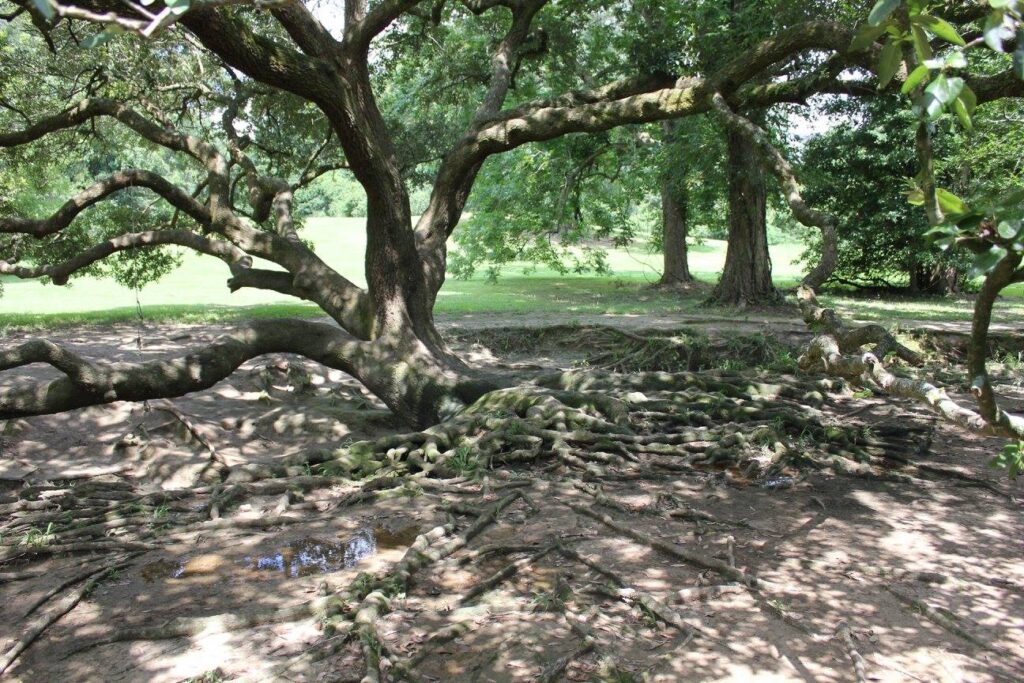Jannette Emmerick
Dr. Georgina Deweese, UWG Professor of Geography, delivered a presentation titled “The Stories That Trees Tell Us” for the Other Night School on March 28.
“I was supposed to give this talk two years ago, but things got pushed around and pushed back,” said Deweese. “But based on the description I gave two years ago, it looks like I was going to talk about the importance of trees to humans, through religion and culture. And then move into tree ring analysis, which is my specialty.”
Deweese specializes in tree ring analysis, or dendrochronology, branching into dendroarchaeology, which involves studying the components of human history hidden within trees.
“I date wooden structures,” said Deweese. “But there are other things that can be dated, like paintings and musical instruments. There’s a lot of forensics that you can do with tree rings.”
The accuracy of dating wood often depends on the cut size, but even then, dendrochronologists can still estimate an accurate time frame.
“It’s always a ‘whodunit?’ Which is always interesting,” said Deweese. “For example, if I’m trying to date a building—Everyone around here always thinks they have a Cherokee building, andthey usually don’t. So then you have to figure out how old it is and who actually built it.”
Dendrochronology as a field is considered fathered by astronomer Andrew Ellicott Douglass in the late 1800s and early 1900s. He observed the correlation between sunspots and the growth of tree rings, and from this discovery established dendroclimatology also, which examines the present climate and reconstructs past climate history.
“My dissertation is actually on reconstructing fire routines, so trying to determine in the past how often an area was burned,” said Deweese. “Before the era of Smokey Bear and 120 years of fire suppression, and before we figured out “Oh, we’re supposed to burn it.” So now we have to figure out how often, what season and all of that information before the forest service can start prescribed burning.”
Dendrochronologists typically compare the wood they are analyzing with stressed trees, as in trees that have gone through natural climates and environmental factors. In this way, ‘pet’ trees like bonsais or backyard trees are not the best record keepers of their environment.
“There have been some famous violins that have been dated, it was issues with insurance,” said Deweese. “Like ‘Oh, if this is a Stradivarius, then we have to insure it for this, or we can sell it for this,’ but because it’s a violin, you don’t have the entire tree. You can just have a range.
“Stradivarius got all of his wood from a particular area in a sort of mountainous area, and he was making violins during a time when there were fewer sunspots,” continued Deweese. “And the rule of thumb is fewer sunspots: cooler earth. So there was that signal in the wood as well. So taking those [tree] rings from the violin and comparing it to a dated chronology from that area, scientists were able to match them. It’s like, ‘yes, definitely this violin was built sometime during this time period, so it could have been built by Stradivarius.’”
In the 17th and 18th century, North America and Europe experienced lessened sunspots, which became known as Maunder Minimum. The Maunder Minimum happened during the “Little Ice Age,” when Europe and North America received below average temperatures.
Stradivarius making violins during that time adds a human element and history to the geographicaland environmental event.“
I always say that geography is the study of space and how things are organized in that space over time. And so dendroarchaeology, I know it sounds a lot like anthropology, but we’re looking at not just dating the structure but also the human history behind it.”
Trees provide many necessities for human civilization whether through their fruit, syrup or sap or being utilized in architecture and art, and on top of all that, they also record the world changing around us and remind us of the past behind us.
You may also like
-
UWG’s Ingram Library Hosts Pop-Up Study Spot to Help Students Prepare for Finals Week
-
UWG Offers Mental Health Support And Academic Services To Maintain Student Success During Finals Week
-
UWG Alumnus Shares His Experience Exploring the Underground Flood Channels of Las Vegas
-
Georgia Students Simulate the Struggles of Dementia
-
UWG PR Students Score a Georgia Power Tour at Atlanta Corporate Office
